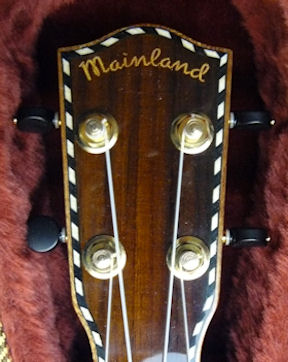
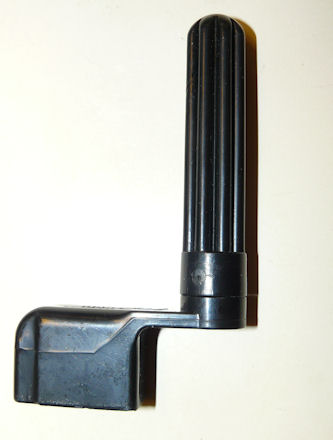
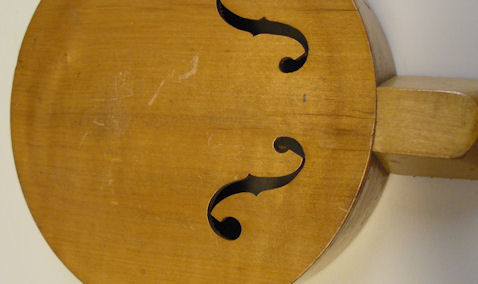


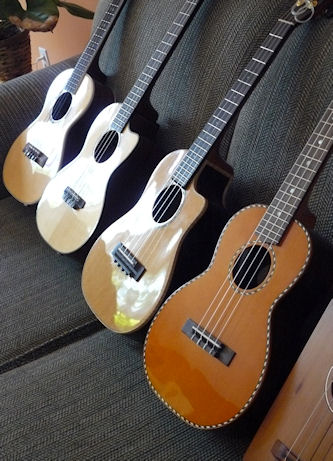
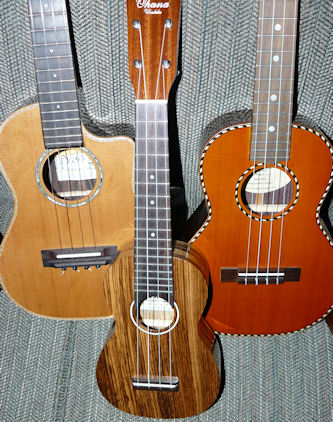
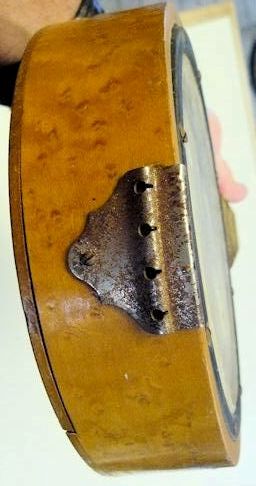
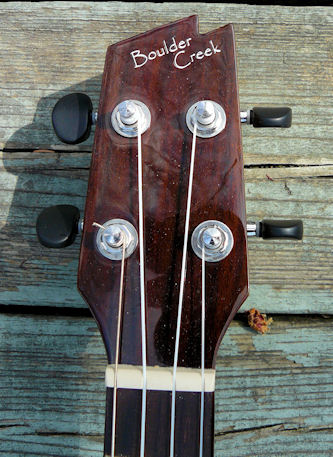
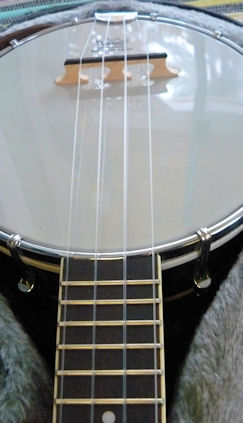
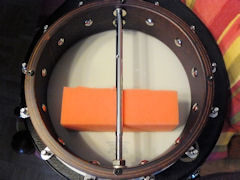
Ukulele (and guitar) acoustics
It seems so simple. Pluck a string and the music flows forth. And that's all you really need to know to make music happen on a ukulele. But there's a lot more to it. A lot of interesting and often slightly mystifying things happen when that string gets struck, and here's a very simplified version of the physics (acoustics) involved.
When you pluck a string, you deform it. That creates a bulge in the string. When you release it, that bulge travels along the string in both directions from where you let go. When that bulge, or wave, gets to the ends of the string (at the nut, the saddle or at the fret in front of your fingertip), it inverts and travels back. The two waves meet, wobble, and continue on towards the other end, usually in a somewhat altered form from the meeting. They will keep doing this until they lose that energy and subside, or until you strike the string again, which will create new waves, sometimes on top of the old ones.
Those waves are mechanical energy. They don't sound like anything, yet. When they get to the saddle, some of that that energy gets absorbed abd filtered to the bridge. From there it goes onto the top, where the sound happens.
The saddle lets some frequencies through, and resists (or impedes, hence: impedance) others. The energy that gets rejected remains in the string, making that wave continue to travel back and forth.
The frequencies the saddle passes or allows through then go on to the bridge and top. Those it rejects remain as mechanical energy, bouncing back along the string and altering the wave form further. This is where you get sustain: from the frequencies that stay with the string until they are muffled, changed (by changing the fret location on the string or by mixing with other waves on the string) or die on their own from entropy.
The passed frequencies first vibrate the bridge. This is designed to spread the energy more widely through the top. That's why many bridges are much bigger than the saddle: to spread the energy around a larger surface.
The bridge - usually dense wood like ebony - also acts as a filter, further refining what waves get passed on the top and what gets rejected. The bridge really helps mellow or warm the frequencies.
The top is where the energy or waves get turned into sound. The vibrations make the top move in and out (towards and away from the back of the uke). When it pushes out, the top expresses that wave into the air where it becomes a sound wave.
How (and how well) that sound is translated from the mechanical energy into an audible sound depends on a wide range of inter-related elements: the type of wood in the top (and its grain and elasticity), its thickness, the type of finish that covers it, the type, size and location of braces underneath the top, the area of the top's wood surface, the age of the wood, the humidity of the air and that altitude of the performer. Among others.
The top has a range of frequencies it can replicate, in which there is an optimum band for volume and fidelity. Since no two slices of wood are exactly the same, that can differ with each instrument. That's why two identical-looking instruments from the same manufacturer can have different sounds.
But that's not where it ends. The wave that's come from the string through saddle and bridge is also pushed inside the uke by the vibrating top. There it bounces around and gets further altered.
That bounced wave also bumps back into the top, affecting the outward vibration it is already making. Then the inside wave comes out through the sound hole and rushes towards the listener.
The sound that escapes is a combination of the frequencies reflected by the back and sides, minus those that are absorbed, as well that produced by the Helmholtz resonance of the hole itself (the note produced by the escaping air, which is similar to the sort of note you get when you blow across a bottle neck. See this Kawika Ukuleles page for some thoughts on this. His experiments show it's close to a low G# on his tenors, but that will likely vary with design, shape, cavity volume and sound hole size on different ukes. I would think it would be preferable to engineer that resonance to be closer to low G, but apparently not.)
All this takes place in a very short timeframe. The speed of sound is almost 350 metres per second. To the listener a short distance away, these multiple waves occur simultaneously. Instead of hearing separate waves from top and inside, the listener hears a rich, complex mix of overtones, harmonics and overlapping waves and frequencies.
There's something else happening with the strings I didn't mention earlier. Strings don't just vibrate at one frequency. Say you pluck an open A string. It vibrates 440 times a second (440 hertz). But it's not a simple up-down sine wave. Each half of the string vibrates at double that speed: 880Hz. And each third at 1,320Hz, and each quarter at 1,760 Hertz. So there's a lot of harmonics going on here all at once.
The saddle will impede, or filter out, some of these frequencies. So will the bridge and the top. Some will remain in the string as energy (sustain). The rest get passed along to the bridge and onwards. Some even survive all that impedance to get expressed through the top, and arrive as sound.
Oh, and if you have an under-saddle pickup, that too will filter the sound (before it gets to the bridge) and thus affect the tone (the sounds of a uke unplugged and plugged are quite different). If you're amplifying the sound through that pickup, you're hearing the sound produced by the saddle, but not as it is modified by the bridge and top. So it too can be different.
Because the sound comes mainly from the top, you, the player, don't really get a good notion of what your instrument sounds like. A side sound hole helps (although it means less sound is reflected to the front), and playing in a room with reflective walls to echo the sound back you also helps. But you and your listeners don't really share the same acoustic appreciation of the uke's output.
The University of New South Wales has a really good description of guitar acoustics that says a lot more than I am competent to relate. If you want to learn more, then search online for "guitar acoustics". There's a lot of really fascinating stuff out there.
I've fleshed this out somewhat in my entry on my experiment with glass saddles on my blog.
Banjo ukuleles are somewhat different. They use a thin plastic or skin top that resonates the sound. Because of its thinness, the sound does not have the same overtones as wood. Natural skins are 'warmer' sounding but subject to deformation due to humidity. The tension of the head and the diameter of the skin both affect the sound and volume.
Banjo ukes use simple bridge/saddle combination pieces. Sometimes these have two types of material, but some are solid. Popular wood for BU bridges is maple, and maple with an ebony cap is common. Bone and graphite have also been used. The thickness of the bridge, its height and number of feet on the skin affect the resulting sound, too.
Also, banjo uke bodies are small and circular, so there isn't a lot of cavity for the sound to bounce around in. Open-backed instruments let a lot of the sound dissipate from the back. Those with resonator plates reflect it to the front, so the volume of the cavity has a greater effect, as does the distance between head and resonator. Typically the body is a dense, reflective wood like maple, but may also be a synthetic material.
You can soften the sound of a BU by placing a non-reflective material inside (like a T-shirt) or wedge a small piece of sponge between the coordinator rod (brace) and the skin. Similarly, you can put some felt over the resonator. To enhance or brighten the sound, you can put more reflective material inside, such as a thin metal plate (see this site for one such idea).
Like other ukuleles, the tension, diameter and type of string also contribute to the sound by determining how much energy is passed to the bridge.
